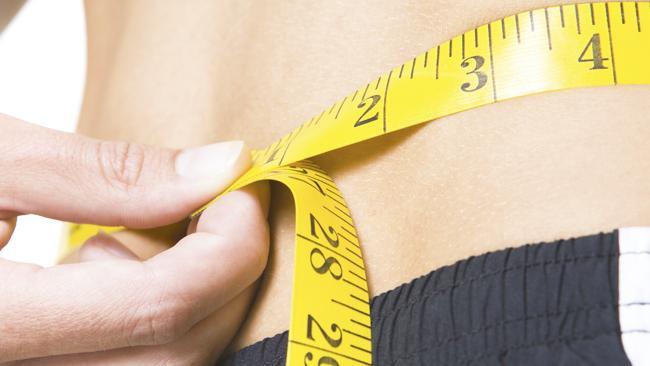BMI calculator wrongly labelling thousands as obese, research shows
THE standard health index used to measure obesity rates is highly flawed and could be slapping a false fat label on thousands of Australians.

News
Don't miss out on the headlines from News . Followed categories will be added to My News.
THE BMI calculator used in the public health system to measure obesity rates is highly flawed and could be slapping a false fat label on thousands of Australians, new research has highlighted.
A study into the size and shape of women aged 18-44 has found that almost one-third of participants were miscalculated as obese using the BMI calculator alone, highlighting the need for body measurements, percentage body fat and muscle mass to be introduced into testing.

The findings of The Average Australian Woman: A cross-sectional analysis of the body shape and size of Australian women will be presented this week at the Dietitians Association of Australia national conference.
Amanda Patterson, an accredited practising dietitian and the leader of the University of Newcastle research team, said: “There were significant numbers that were classified in the overweight BMI category that were actually within the guidelines for percentage body fat and others that were in the healthy BMI range that were ‘under-fat’, highlighting the fact that we need to use more accurate measures to assess body composition when looking at the relationships with health outcomes.”
But the Australian Medical Association’s state president Shaun Rudd said the BMI test was simply a guideline and a hassle-free indicator for health practitioners.
Rachelle Foreman, the health director of the Heart Foundation Queensland, said the foundation supported monitoring waist measurements at a population level.
“It is widely accepted as an indicator of potential risk of developing chronic diseases such as heart disease, Type 2 diabetes and high blood pressure,” she said.
A waist measurement of 94cm or more (for men) or 80cm or more (for women) is an indicator of increased risk.
On the BMI scale, Caroline Buchanan at 1.65m and 68kg in weight is hitting the overweight category at 25.
The 24-year-old powerhouse athlete has an enviable physique and is the World Cup Series BMX champion and this season has won the first round of the World Cup.
“I’ve heard about BMI but have never been bothered by it. As an elite athlete, you just have to get fit and go fast,” she said.
“We need to eat exceptionally well and clean to have a good power to weight ratio. We have skin folds checked regularly and, for me, that has been one of the indicators for my fitness level.”
An Australian Institute of Sport spokesperson said BMI was not used to assess top athletes and it did not apply to elite sportspeople.

JUNK FOOD FAILS TO HIT THE SPOT
WHEN those hunger pangs strike, you might think most of us would be tempted to reach for a biscuit.
But according to new research, when we are hungry, we are more likely to pick a healthy snack over an unhealthy one if given a choice.
The study asked 1000 people to rate how satisfied they thought they would be by different types of food. Results showed that vegetables and fruits were perceived to satisfy hunger the most, while foods such as sweets, biscuits and crisps were perceived to satisfy hunger the least.
Lead researcher Nicola Buckland, from the School of Psychology at Leeds University, in the UK, said participants tended to associate “hunger satisfaction” with foods that are low in fat, high in fibre and more expensive.
The researchers now hope to build a database of the way foods are perceived to help battle obesity.
They said, if their findings were correct, steering people towards healthier alternatives might be all that is needed – as once they see a healthy option, more people are likely to perceive it as hunger-sating, and choose it over junk food.


